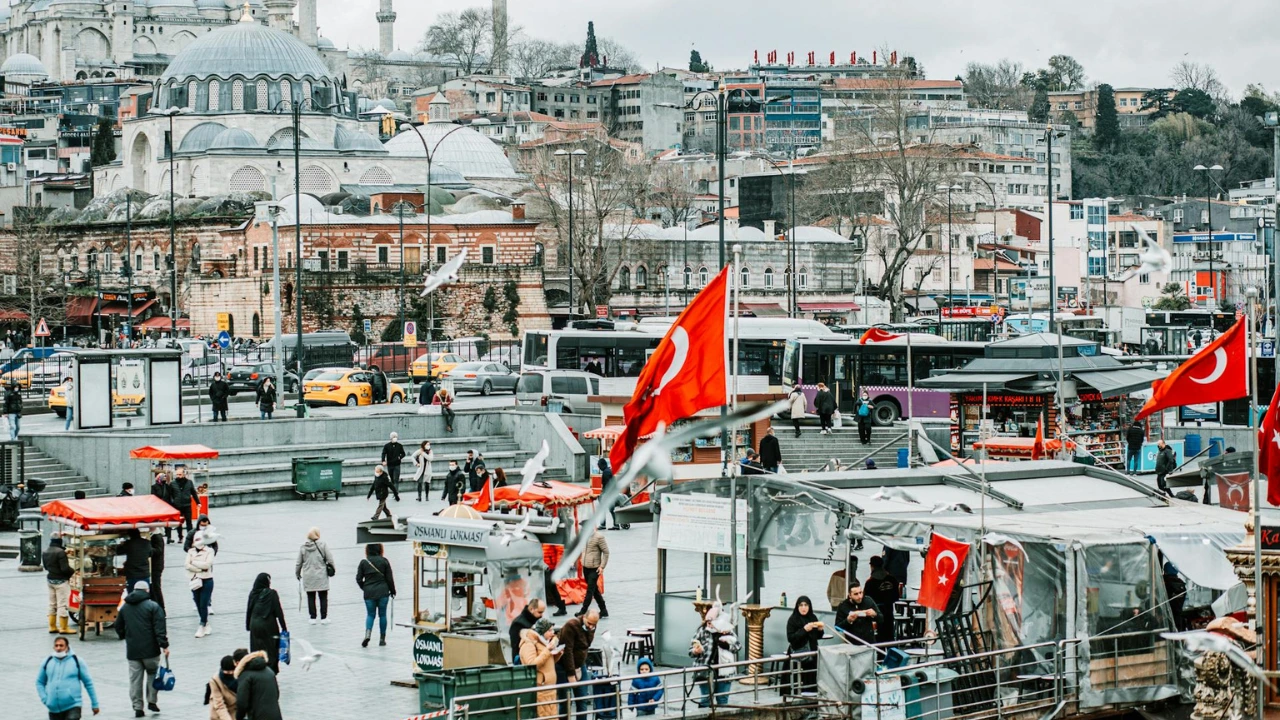Embracing Local Culture in Modern Travel: Rise, Benefits, Challenges, and the 2025 Outlook


The Evolution from Tourist to Cultural Explorer
Modern travel has changed dramatically over the past two decades. No longer is it enough for visitors to check off a list of landmarks or take photos in front of famous sites. Instead, today’s travelers are looking for deeper, more authentic engagement with the places they visit. They want to learn about customs, participate in traditions, share meals with locals, and truly understand the history and way of life of a community. This transformation has given rise to what is widely known as cultural tourism, one of the fastest-growing and most significant sectors of the global travel industry. It reflects a major shift in values, where travelers prioritize authenticity, sustainability, and connection over superficial sightseeing. In the current context of 2025, this trend has only grown stronger, driven by changing traveler expectations, technology, and the increasing importance of preserving cultural identity in an interconnected world.
This article explores why cultural tourism has surged in popularity, its benefits for both travelers and local communities, the challenges that arise when culture becomes a commodity, and how tourism stakeholders can responsibly manage cultural experiences. It also examines fresh examples and emerging trends in 2025 that show how local culture is shaping the future of global tourism.
The Rising Wave of Cultural Tourism
Cultural tourism is no longer a niche. It has become mainstream, with a significant portion of international travelers seeking out heritage, traditions, and authentic cultural encounters. Studies in recent years suggest that around four out of ten international trips now involve a cultural component, whether that means attending a local festival, exploring indigenous traditions, participating in craft workshops, or tasting food prepared using centuries-old recipes. This growth is fueled by several key factors.
One of the most important drivers is the influence of digital platforms. Social media has opened up a window into cultural experiences that were once limited to local communities. Travelers today can watch videos of rituals, read personal blogs about life in rural villages, or view documentaries that highlight cultural traditions around the world. This exposure builds curiosity and interest, inspiring travelers to design trips around the possibility of taking part in these experiences firsthand. In addition, the accessibility of digital storytelling allows travelers to connect with the human element of culture rather than just its material aspects.
Another driver is the modern desire for authenticity. Travelers are increasingly skeptical of mass tourism and pre-packaged experiences that feel inauthentic. Instead, they value immersion in local traditions, even if those experiences are simple or modest. For many, a meal cooked by a grandmother in a family kitchen, a lesson in pottery from an artisan, or a conversation with a village elder carries more value than luxury accommodations or commercial entertainment. This shift is so significant that even luxury travel is being redefined. Wealthy travelers are moving away from purely material indulgence and toward what some describe as “anti-luxury” experiences exclusive not because they are expensive, but because they offer rare access to meaningful cultural encounters.
The growing interest in wellness and slow travel has also strengthened cultural tourism. More travelers are embracing the idea of slowing down, staying longer in fewer places, and immersing themselves in the rhythm of local life. Practices like mindfulness, traditional healing, herbal rituals, and community-based wellness retreats are blending cultural traditions with modern wellness trends. Together, these forces have positioned cultural tourism at the heart of the modern travel industry, making it a central theme for destinations worldwide.

The Benefits of Cultural Tourism
The rise of cultural tourism has brought profound benefits for both travelers and host communities. One of the most significant advantages is the preservation of cultural heritage. When communities share their customs with travelers, they are encouraged to safeguard practices that might otherwise fade. Music, dance, oral storytelling, handicrafts, and even culinary traditions are given new life when there is an audience eager to experience and appreciate them. UNESCO World Heritage Sites, for example, often receive increased funding and attention as tourism boosts awareness of their importance. This helps ensure that historical monuments, sacred sites, and intangible traditions are passed down to future generations.
Equally important is the economic empowerment that cultural tourism brings to local communities. When travelers spend money on handmade goods, participate in cultural tours, or choose locally owned accommodations, the benefits go directly to artisans, performers, and small business owners. This creates jobs, sustains traditional livelihoods, and generates pride in cultural identity. Many destinations that were once overlooked by mainstream tourism have built thriving economies around cultural experiences. Examples include rural villages that offer homestays, indigenous groups that run guided tours, and urban neighborhoods that have revitalized their heritage through cultural festivals and art. This form of tourism often circulates money more fairly within communities compared to large-scale corporate tourism models.
For travelers themselves, cultural tourism offers the chance to form deeper human connections. Rather than remaining passive observers, visitors engage directly with the people who make a place unique. Whether it is learning the haka from the Māori in New Zealand, sharing butter tea in a Tibetan village, or attending a traditional storytelling circle in Canada, these encounters create lasting memories and emotional bonds. Such experiences give travelers a richer understanding of history and identity, transforming their journeys from vacations into personal growth experiences.
There is also a sustainability angle. By distributing visitor flows beyond overcrowded tourist hotspots, cultural tourism can help relieve pressure on major landmarks while boosting interest in smaller, lesser-known destinations. This decentralization supports balanced economic growth and helps prevent the negative effects of overtourism in already burdened cities. At the same time, cultural tourism often encourages longer stays, as travelers who seek meaningful immersion tend to spend more time in a single destination. Longer stays translate into reduced carbon footprints compared to fast-paced, multi-stop tours.
The Challenges of Cultural Tourism
Despite its many benefits, cultural tourism comes with challenges that require careful management. The most frequently cited concern is the commodification of culture. When traditions are repackaged purely for entertainment or profit, they risk losing their authenticity and meaning. A sacred ritual, for instance, can lose its cultural depth if it is altered to fit tourist schedules or performed in commercial settings without context. The result may be experiences that feel hollow to travelers and exploitative to communities.
Over-commercialization is another challenge. Some destinations experience so much demand for cultural experiences that the culture itself becomes diluted. Bali, for example, has faced criticism for turning sacred ceremonies into tourist attractions. When culture is reshaped to fit external expectations, communities may lose control over their own heritage, and local residents can feel alienated from traditions that once had deep personal significance.
Overtourism is also a major issue. Cities like Venice struggle to balance cultural preservation with mass tourism. The influx of visitors can overwhelm infrastructure, drive up housing costs, and displace local residents. Similarly, large-scale cultural festivals and events, though designed to attract tourists, can create noise pollution, crowding, and environmental stress on fragile ecosystems. The Medaina music festival in Petra, Jordan, is an example where mixing art, heritage, and tourism sparked debate about whether the cultural value of the site was being undermined.
Another emerging concern in 2025 is the problem of greenwashing. As sustainability becomes a marketing tool, some destinations and operators exaggerate their eco-friendly credentials without making genuine efforts. For travelers, it becomes difficult to distinguish between authentic, community-focused projects and superficial branding campaigns. This creates distrust and undermines the credibility of cultural tourism initiatives.
Strategies for Balancing Culture and Tourism

For cultural tourism to thrive sustainably, careful strategies are needed. Community-led tourism remains one of the most effective models. When local people are directly involved in shaping, managing, and benefiting from tourism, authenticity is preserved, and the economic rewards remain within the community. This approach empowers residents to present their culture in a way that reflects their values, rather than having outsiders dictate the narrative. Projects run by indigenous groups in Canada and Maasai communities in Kenya show how this approach can combine respect, education, and financial empowerment.
Sustainable practices also play a crucial role. Managing visitor numbers through ticketing systems, timed entry, or visitor caps can reduce overcrowding and protect cultural landmarks. Restoration programs, ethical guidelines, and awareness campaigns help ensure that cultural sites are maintained responsibly. Encouraging slow travel, off-season visits, and secondary destinations can also spread the benefits more evenly while reducing stress on major attractions.
Education is another essential tool. Travelers who understand the significance of a cultural practice or monument are more likely to engage respectfully. Tour operators and cultural organizations can enhance experiences by offering background information, cultural orientation, and opportunities for dialogue. This transforms tourism from passive consumption into active learning.
Technology can also support cultural preservation. Augmented reality, for example, can provide immersive storytelling without physically straining historic sites. Smart tourism applications can guide visitors responsibly while also collecting data to help destinations manage tourism flows. While technology should never replace human cultural interaction, it can complement traditional experiences in a way that enhances learning and accessibility.
Trends and Case Studies in 2025
In 2025, cultural tourism continues to evolve with new trends and examples that highlight its growing importance. One of the most notable shifts is the rise of “anti-luxury” cultural experiences. High-net-worth travelers increasingly prioritize authenticity over extravagance. A cooking class in a rural farmhouse or a guided storytelling evening in a village can carry as much prestige as a five-star resort. This reflects a broader cultural shift where value is placed on meaning and rarity rather than material indulgence.
Destinations are also leaning into lesser-known cultural regions to diversify their tourism appeal. Remote areas in Central Asia, rural corners of Africa, and smaller Mediterranean islands are seeing increased attention from travelers who want to avoid overcrowded hubs while still experiencing rich cultural traditions. This aligns with a broader trend of decentralization in global tourism.
The fusion of culture and wellness is another key development. Wellness retreats that integrate local healing practices, herbal traditions, and spiritual rituals are booming. From yoga inspired by ancient philosophies to spa treatments rooted in indigenous knowledge, wellness tourism is giving cultural practices a modern platform while also meeting the demand for holistic experiences.
Art and heritage festivals are being reimagined as immersive, multi-sensory events that combine culture, music, and gastronomy. While these events can generate economic benefits, they also spark debates about authenticity and conservation. Managing these experiences carefully is critical to avoid exploitation or environmental harm.
Food-based cultural tourism is also experiencing unprecedented growth. Travelers are increasingly building entire itineraries around culinary trails, local markets, and cooking workshops. Food offers one of the most accessible and engaging ways to understand culture, and destinations are leveraging this by promoting regional cuisines as central pillars of their tourism strategy.
The Future of Cultural Tourism
Looking ahead, cultural tourism is poised to continue its growth, but its future will depend on balance and innovation. Travelers are expected to seek even more personalized and immersive experiences, tailored to their interests and values. Culinary journeys, artisan-led workshops, and small-scale community experiences are likely to dominate itineraries.
Sustainability and inclusivity will also remain central. Destinations will need to focus on genuine community involvement, equitable distribution of benefits, and careful management of cultural resources. Inclusive tourism will mean amplifying marginalized voices, celebrating diversity, and ensuring that cultural tourism does not exclude or exploit vulnerable groups.
Technology will continue to play a supportive role, helping travelers access deeper storytelling and destinations manage tourism flows responsibly. However, human connection and authenticity will remain the core value that travelers seek.
Conclusion : Crafting Meaningful Cultural Travel
By 2025, cultural tourism has become one of the most important dimensions of global travel. It offers profound benefits: preserving heritage, supporting local economies, and creating meaningful connections between people. At the same time, it poses challenges, from commodification to overtourism, that demand careful management. The future of cultural tourism lies in strategies that center communities, prioritize sustainability, and embrace both tradition and innovation.
For travelers, embracing local culture is more than just a trend, it is an opportunity to enrich their journeys with meaning, purpose, and connection. For communities, it is a pathway to preserve identity while generating prosperity. Done thoughtfully, cultural tourism can become a powerful force for global understanding, ensuring that travel is not just about where we go, but how we engage with the people and cultures that make each place unique.








